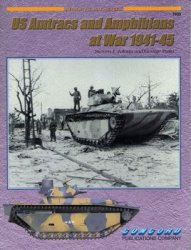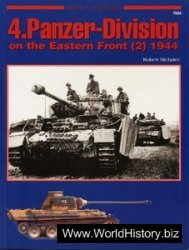In their immediate, least refined, but most military objective, general terror methods aimed at annihilation raise problems of mass and speed which are difficult to solve. In 1939 Himmler and Heidrich decided in principle on the setting up of "Special Action Groups” or Einsatz-gruppen, with four units labelled A, B, C, and D. They were to follow the troops advancing into Poland and later into Russia. Their objective would be the elimination of political commissars and Jews. They solved two minor problems: keeping the army out of it and giving the S. S. an autonomous military body, adapted to its purpose and therefore efficient. One of the leaders, Otto Ohlendorf, formerly head of Amt III of the Central Office of Reich Security (Reichssicher-heitshauptamt or R. S.H. A.) then, from June 1941 to June 1942, of Einsatzgruppe D attached to the 2nd Army in the south Ukraine, declared at Nuremberg that his men had executed 90,000 men, women, and children. In a report seized later by the Allies, Gruppe A, operating in Belo-russia and the Baltic states, estimated that it killed 229,052 Jews up to January 31, 1942. According to Eichmann, the Einsatzgruppen working in the East exterminated two million people, most of them Jews. Efficient though the special groups were in certain respects, their work could not be secret and, given the size of their task, was low in productivity.
In the spring of1942 Himmler authorised the introduction of "gas vans” especially for the extermination of women and children. Ohlendorf explained how they worked: "You could not guess their purpose from their outside appearance,” he said. "They were like closed lorries and were built so that when the engine started the exhaust fumes filled the inside, causing death in 10 to 15 minutes.”
These were a step forward in the matter of secrecy, but they did not add much to the speed of the operation. There were not enough of them. Their use also brought dangerous psychological consequences on those who worked them. Even for the specialised troops it took some nerve to bring out all the bodies. The worst was that they only killed 15 to 25 at a time.
The real progress came with the installation of gas chambers in Auschwitz. These meant secrecy, speed, and no psychological consequences. The loneliness of the site ensured total secrecy. The time was cut to between 3 and 15 minutes. Quantity was satisfactory: in the last period a gas chamber at Birkenau could kill 6,000 people a day. The psychological consequences were eliminated as the bodies were handled by a Sonderkom-mando, detainees who would themselves be exterminated a few months later. When the system was fully operative, however, there were bottlenecks in the transfer of the bodies from the chambers to the cremation ovens. In spite of several
Suggestions no workable solution was found.
The setting-up of this procedure was clearly explained by Rudolf Hoess in his evidence. 'Tn June 1941,” he said, 'T received the order to organise the extermination at Auschwitz. I went to Treblinka to see how it operated there. The commandant at Treblinka told me that he had got rid of 80,000 detainees in six months... He used carbon monoxide...
"But his methods did not seem very efficient to me. So when I set up the extermination block at Auschwitz I chose Zyklon B, crystallised prussic acid which we dropped into the death cells through a little hole. It took from 3 to 15 minutes according to atmospheric conditions for the gas to have effect. We also improved on Treblinka by building gas chambers holding 2,000, whereas theirs only held 200.”
A Nuremberg witness spoke of the duties of the Sonderkommando: "The first job was to get rid of the blood and the excrement before separating the interlocked bodies which we did with hooks and nooses, before we began the horrible search for gold and the removal of hair and teeth, which the Germans considered strategic raw materials. Then the bodies were sent up by lifts or in waggons on rails to the ovens, after which the remains were crushed to a fine powder.”
The gas chamber method at Auschwitz gave rise to a further refinement: selection. The detainees were selected on first arriving, then again more Or less periodically within the camp and this caused an extraordinary increase in terror.
On July 22,1941, Keitel signed two directives: 'Tn view of the considerable extent of the area of occupation in Soviet territory,” the first one ran, "the security of the German armed forces can only be assured if all resistance on the part of the civilian population is punished, not by the legal prosecution of the guilty, but by measures of terror which are the only ones which can efficiently strangle all inclination to rebel.” In the second directive Keitel laid on Himmler the "special duty” of drawing up plans for the administration of Russia. To achieve this Hitler specified that he had delegated to Himmler the right to act on his own responsibility and with absolute power. Keitel then made clear the Fiihrer’s intentions by decreeing that the "occupied zones will be out of bounds during the time Himmler is carrying out his operations.” No one was to be admitted, not even the highest-ranking party officials.
The concentration camp system was now in full swing. It was the basis of the social and political dominance of the S. S. The power of the S. S. was practically at its height. In the very middle of the war it was still stronger than the army. It dominated the party. It had a stranglehold on the administration. It was going to reach the peak of its power by bringing the concentration camps into the production lines.




 World History
World History









